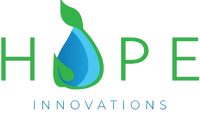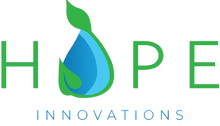5 Easy Steps to Grow a Thriving Hydroponic Garden for Beginners
Are you curious about how to easily grow a successful and thriving hydroponic garden for beginners?
You're not alone! I remember feeling the same way, intrigued by hydroponics but also a bit intimidated by its perceived complexity. The good news is that growing hydroponically can be simple and incredibly rewarding. With a few foundational tips, you can enjoy a lush, thriving hydroponic garden with minimal effort.
In this guide, I’ll share the five essential steps that have helped me and thousands of others achieve great success with the "little effort, big garden" method. These tips will ensure your hydroponic garden is both easy and successful.

1. Maintain Proper Temperature : Water and Ambient
Temperature plays a crucial role in the success of your hydroponic garden.
When the temperature is too low, plants slow down their growth. This is because the enzymes that help plants grow work less effectively in cold conditions. As a result, plants grow smaller and weaker, and their roots can't absorb nutrients and water properly. This leads to stunted growth and poor health.
On the other hand, when the temperature is too high, plants get stressed. They lose water quickly, causing them to wilt. High heat can damage plant cells and disrupt their normal functions, leading to poor growth and weak plants. If the heat stress continues for too long, plants can eventually die.
To avoid these problems, keep the temperature stable and within the ideal range:
- Room temperature: 16-26°C (60-78°F)
- Water temperature: 18-24°C (65-75°F)
Keeping these temperatures consistent ensures that plants can grow properly, absorb nutrients efficiently, and stay healthy.
Avoid areas with drafts or heating/cooling vents that can cause temperature swings. Keeping these temperatures consistent ensures that plants can grow properly, absorb nutrients efficiently, and stay healthy.

2. Use Pure Water: Distilled or reverse osmosis
Water is the lifeblood of your hydroponic system, serving as the essential medium that delivers nutrients to your plants. While water plays this critical role, it can also absorb and transport harmful bacteria and pathogens, potentially harming plant health. It's important to note that not all water is created equal. Just because water is safe for human consumption doesn’t mean it’s safe for your plants. Different qualities of water can significantly impact the success of your hydroponic garden.
So, what type of water should you use, and which ones should you avoid?
Avoid Well Water: Using well water in hydroponics is not recommended because you don’t know exactly what's in it. Well water is often high in minerals like iron and sulfur, and it can contain harmful bacteria such as E. coli. Imagine trying to bake cookies with a bowl full of unknown ingredients in unknown quantities. It would be nearly impossible to get a good result, and the same goes for growing plants with well water—it’s almost impossible to achieve healthy growth.
Be Cautious with Tap Water: Tap water can be used in hydroponics, but you need to be cautious. If your tap water is high in salts, hard, or soft, it can cause problems. Using tap water is like being handed a bowl with a few unknown ingredients—it's workable but not ideal. You'll need to test and possibly treat the water to make it suitable for your plants.
Use Reverse Osmosis (RO) or Distilled Water: For the best results, use reverse osmosis (RO) or distilled water. These types of water are pure and free from minerals and chemicals. Using pure water is like starting with an empty bowl when baking cookies—you know exactly what you’re adding. This way, when you add nutrients to the water, you know exactly what's in it, ensuring a perfect growing environment for your plants.
By understanding the importance of water quality and choosing the right type of water, you set the foundation for a successful and healthy hydroponic garden. Pure water like RO or distilled ensures your plants receive the nutrients they need

3. Light: The Life Force of Your Plants
Light is the life force of your plants, fueling their photosynthesis—the process by which they convert light into energy. Without adequate light, plants cannot produce the energy they need to grow, resulting in weak, leggy plants that struggle to support healthy development or produce abundant yields.
If you are growing indoors, investing in a grow light for your hydroponics system is essential. Grow lights mimic the sun, providing your plants with the proper light spectrum they need to thrive. To ensure your plants receive enough light, make sure the grow light you choose is intense and provides a minimum of 40 watts per square foot. This is the simplest and most effective way to measure light. While you can dive deeper using PAR (Photosynthetically Active Radiation) measurements, sticking with the wattage recommendation is easy and works well.
In addition to the intensity of the light, it's crucial to provide your plants with an adequate light schedule. Keep the grow lights on for 16-18 hours and turn them off for 6-8 hours. Your plants need this period of darkness to rest and carry out essential biological processes. Ensuring they get a balance of light and darkness will promote healthy growth and maximize yields.

4. Maintain proper pH level in Hydroponics System
Maintaining the correct pH in your nutrient solution is crucial for the health and growth of your plants. Keep your solution's pH between 5.5 and 7. Think of pH as a grocery store: when you walk in and all the fresh produce is stocked and the shelves are full, you can take what you want in the amounts you need and walk out easily. This is what it's like when the pH is in the proper range—all the nutrients are available to the plant and it can easily absorb them.
When the pH falls outside of this range, either higher or lower, it's like going into a grocery store where all the produce is behind plexiglass. The food is there, but you can't access it. Similarly, when the pH is not in the ideal range, the nutrients are present in the solution, but the plants can't absorb them effectively. This leads to nutrient deficiencies and poor plant growth.
Ensuring your nutrient solution stays within the proper pH range allows your plants to access all the nutrients they need to thrive. Regularly check and adjust the pH levels to maintain this balance and keep your hydroponic garden healthy and productive.

5. Nutrients: Gourmet Food for Your Plants
Nutrients are the gourmet food for your plants, and it's essential to use water-soluble hydroponic nutrients that include all the necessary micro and macro nutrients. High-quality, water-soluble nutrients ensure your plants get everything they need, promoting vigorous growth, vibrant foliage, and high yields.
Avoid using fertilizers from garden centers or any soil fertilizers, as these are formulated with soil in mind and often lack essential micro-nutrients for hydroponic systems. Without a well-balanced diet, your plants will suffer.
In hydroponics, there are different kinds of nutrient solutions: 1-part, 2-part, and 3-part. Here’s a breakdown:
1-Part Nutrients
These are the simplest to use. Just mix and go. They’re great for beginners or if you want to keep things super straightforward. However, they can lead to nutrient problems as the plants grow because all the nutrients are combined in one solution. As plants develop and their nutritional needs change, a 1-part solution may not provide the precise balance required, potentially leading to deficiencies or imbalances.
2-Part Nutrients
Two-part nutrient systems offer more control by splitting nutrients into two components, allowing for better customization based on your plant's needs. You can adjust the mix if your plants show specific nutrient deficiencies, supporting healthier growth throughout their stages. However, 2-part nutrients are less precise, making it harder to fine-tune the nutrient balance for specific growth stages, potentially leading to suboptimal results during critical phases like flowering.
3-Part Nutrients
A 3-part nutrient system provides the most control and the best results. You can adjust the nutrient mix throughout your plant’s growth cycle, optimizing nutrients for each phase. For example, you can provide more nitrogen during the vegetative stage and increase phosphorus and potassium during the flowering stage, leading to faster growth, healthier plants, and higher yields. This precise customization supports better overall plant health and productivity.
If you're serious about maximizing your hydroponic garden's potential, a 3-part nutrient system is worth the effort. Your plants will thank you with bigger, healthier yields. Our favorite is H.O.G. nutrients by Innovative Plant Products.
Conclusion: Embrace the "Little Effort, Big Garden" Method
By embracing these five foundational tips—maintaining proper temperature, using pure water, ensuring adequate light, maintaining the correct pH level, and using high-quality nutrients—you’re well on your way to effortless hydroponic growing. These are your compass points, guiding every step of your hydroponic journey and leading you to success!
Remember, hydroponics doesn’t have to be complicated. Most people overcomplicate it and add more steps than needed. You don’t need to do that; just follow these simple steps.
If you want to learn more about hydroponics and how to get started make sure to check out our podcast How to Hydroponic by Tessa Agrey and Ryan Agrey We guide you step by step through the world of hydroponic gardening, making it easy for beginners to succeed. Learn how to avoid costly mistakes, tackle common issues, and become a pro gardener.




Leave a comment